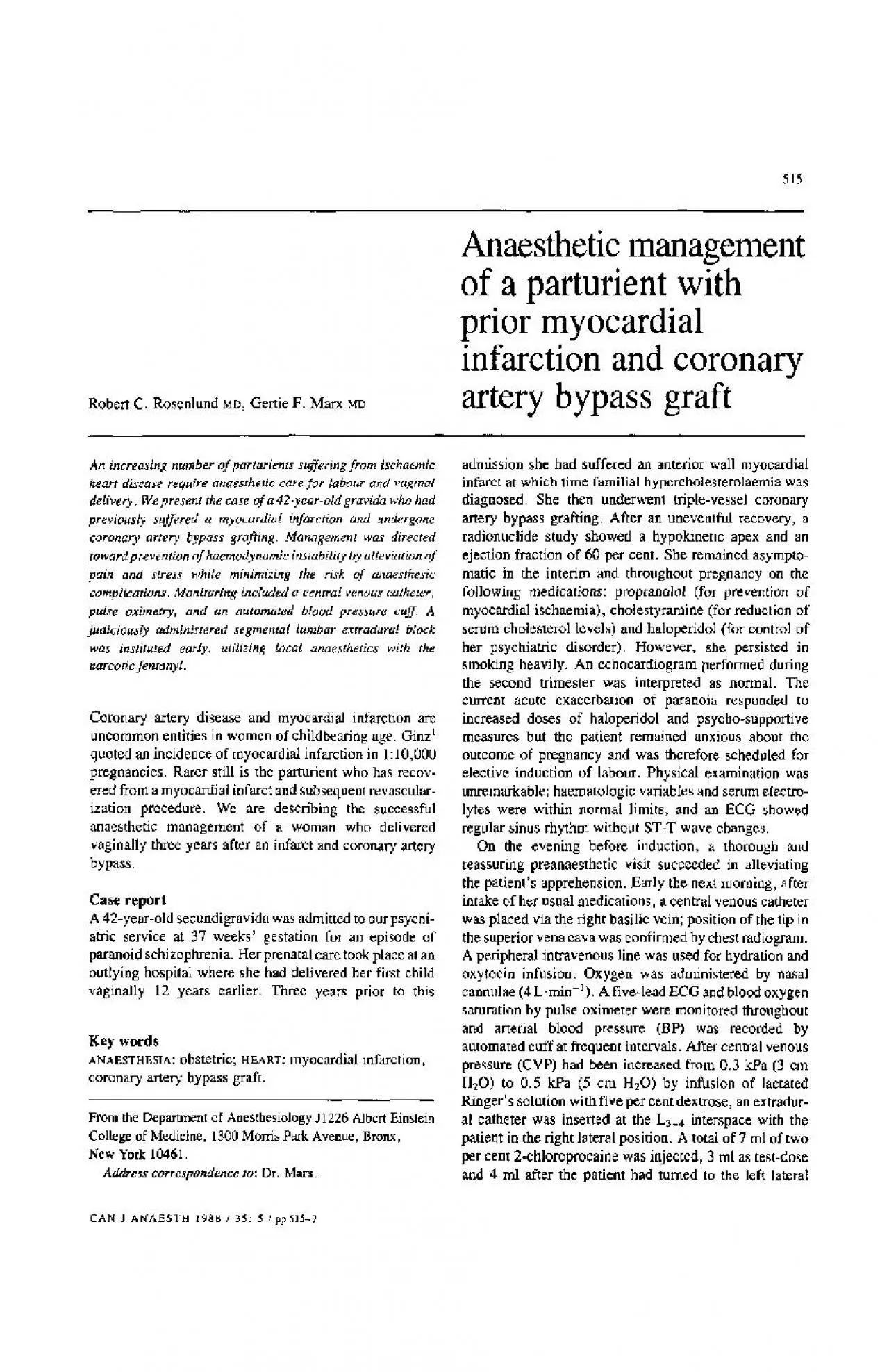PDF-Robert C Rosenlund MD Gertie F Marx MI
Author : fiona | Published Date : 2022-08-30
management of a parturient with prior myocardial infarction and coronary artery bypass graft increasing number of parmriems suffering from ischaemic disease require
Presentation Embed Code
Download Presentation
Download Presentation The PPT/PDF document "Robert C Rosenlund MD Gertie F Marx MI" is the property of its rightful owner. Permission is granted to download and print the materials on this website for personal, non-commercial use only, and to display it on your personal computer provided you do not modify the materials and that you retain all copyright notices contained in the materials. By downloading content from our website, you accept the terms of this agreement.
Robert C Rosenlund MD Gertie F Marx MI: Transcript
Download Rules Of Document
"Robert C Rosenlund MD Gertie F Marx MI"The content belongs to its owner. You may download and print it for personal use, without modification, and keep all copyright notices. By downloading, you agree to these terms.
Related Documents














